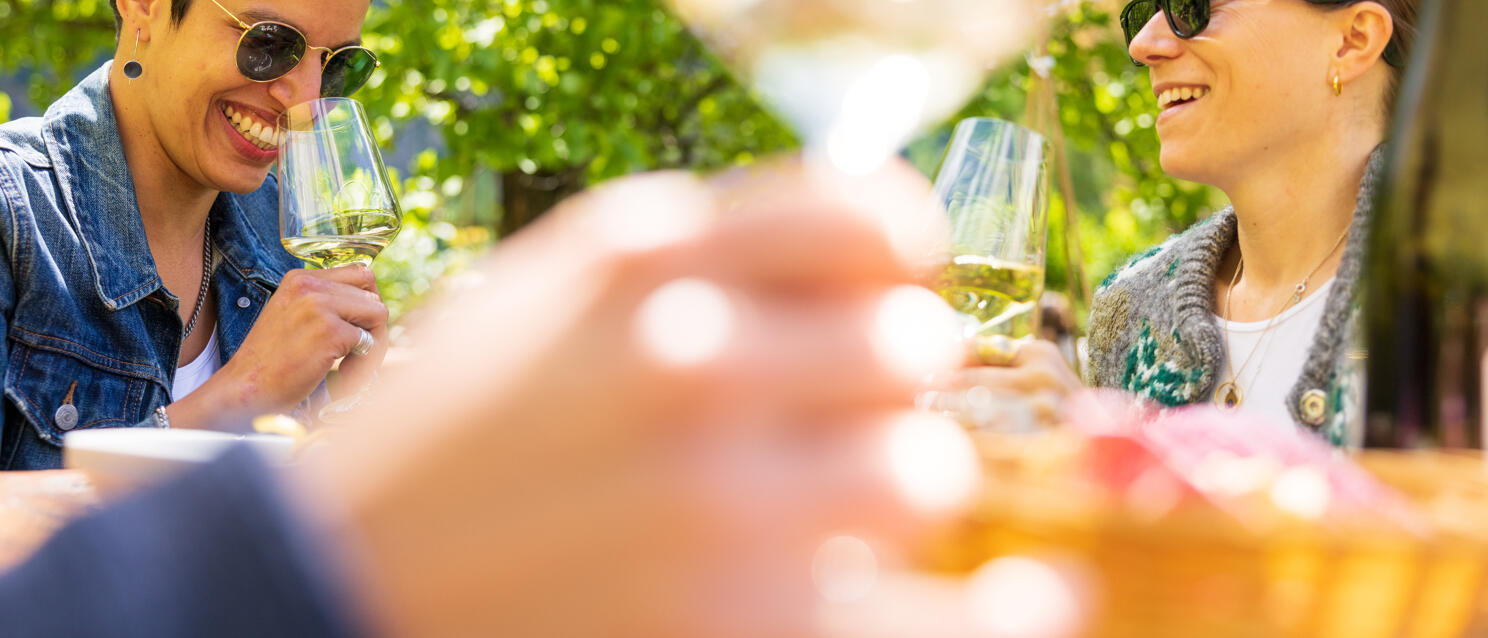바하우의 와이너리와 와인 선술집

'바하우(Wachau, 바하우)' 지역의 전통 와인 선술집과 '부셴샨크(Buschenschank)'에서는 이 지역 특유의 세 가지 품질 등급의 와인을 맛볼 수 있습니다. 각 등급은 시적인 이름을 가지고 있으며, 바하우 와인의 개성과 품질을 잘 보여줍니다.
가장 가벼운 등급은 '슈타인페더(Steinfeder)'로, 바하우에서 자생하는 한 종류의 풀에서 이름을 따왔습니다. 산뜻하고 은은한 과일 향이 특징으로, 가볍게 즐기기에 좋은 와인입니다.
다음은 '페더슈필(Federspiel)'입니다. 매 사냥에서 사용되는 미끼 장식에서 유래한 이름으로, 전형적인 드라이 와인입니다. 음식과의 궁합이 좋아 식사와 함께하기에 적합합니다.
가장 높은 등급은 '스마라그트(Smaragd)'입니다. 바하우 포도밭의 석벽 근처에서 자주 보이는 에메랄드 도마뱀에서 이름을 따왔습니다. 최상급 포도밭에서 늦게 수확한 포도로 만들어지며, 바하우 와인 가운데 가장 높은 품질을 자랑합니다.
바하우 북쪽 강변에서 즐기는 미식
도나우 강 남쪽 강변
바하우의 남쪽 지역은 오랫동안 활기찬 맞은편 강변에 가려져 있었습니다. 오늘날에는 다소 더 평온한 분위기를 유지하고 있지만, 이른바 지역을 대표하는 품종인 노이부르거(Neuburger) 포도의 고향답게 와인 선술집, 와이너리, 호이리거(Heuriger) 분야에서 큰 발전이 이루어지고 있습니다.
도나우 강의 종단 장벽인 ‘트렙펠베게(Treppelwege, 트렙펠베게)’를 제거하고 지류를 개방하는 것을 목표로 하는 ‘LIFE Wachau Project’를 통해 동식물의 새로운 서식지가 조성되고 있습니다. 이로 인해 강과 주변 포도밭 사이에 충적 평야가 형성될 예정입니다.
바하우 남쪽 강변에서 와인 즐기기
무슨 차이인가요?
‘호이리거’와 ‘부셴샨크’
이들은 오스트리아 특유의 사교 공간으로, 편안한 분위기 속에서 지역 와인과 다양한 소규모 또는 대규모 별미를 함께 즐길 수 있는 곳입니다.
부셴샨크(Buschenschank)는 오직 자체 생산한 와인과 자체 재배한 재료로 만든 차가운 요리 및 음료만을 제공합니다.
반면 호이리거(Heuriger)는 연중무휴로 운영되는 와인 선술집이며, 따뜻한 요리와 음료도 제공할 수 있습니다. 재료가 반드시 레스토랑 자체 정원에서 나올 필요는 없으며, 메뉴에는 그 해의 (‘호이리게’) 신선한 와인만 반드시 포함되어야 합니다.